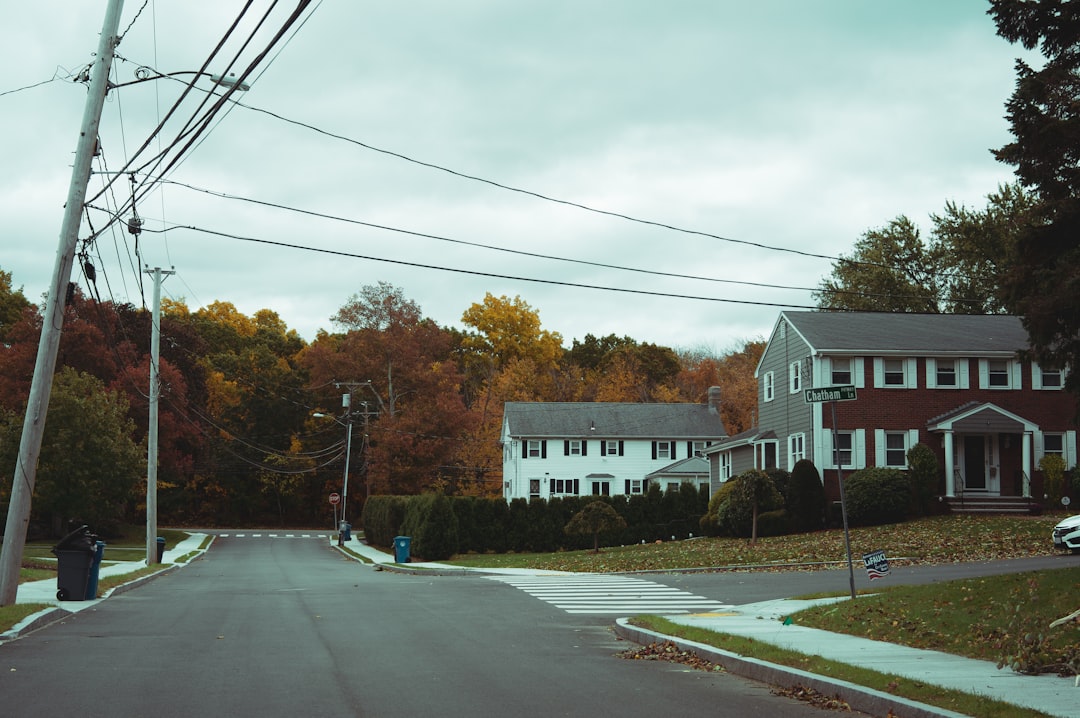Overview of School District Boundary Changes
School district boundary changes are pivotal adjustments that impact students, parents, and communities. These shifts play a crucial role in shaping the educational landscape, influencing factors such as student demographics, resource allocation, and community dynamics. Understanding the reasons behind these changes, their effects on various stakeholders, and effective strategies for navigating them is essential for ensuring a smooth transition and continued academic success.
One common reason for school district boundary changes is the ongoing effort to prevent segregation based on race, ethnicity, and socioeconomic status. For example, the boundary between John R. Lewis Elementary School and Ashford Park Elementary School in Atlanta exemplifies how excluding race, ethnicity, and socioeconomic status from zoning criteria can reinforce segregation. This highlights the importance of considering these factors in boundary decisions to create more inclusive and equitable educational environments.
In addition to addressing segregation, historical practices like redlining and zoning laws have also contributed to the need for boundary adjustments. These practices have led to racially isolated schools, emphasizing the urgency of modifying district boundaries to promote diversity and equity. By understanding the historical context behind these shifts, educators and policymakers can work towards creating more inclusive and integrated school environments.
When it comes to the impact of boundary shifts on communities, these changes can trigger debates over school consolidations and racial imbalances. For instance, in areas like Long Island, NY, disparities in school demographics and resources between neighboring districts have been a point of contention. The challenges posed by these shifts extend beyond school assignments, affecting staffing, programming, discipline rates, and student achievement within schools. By recognizing the implications of boundary modifications, families can actively engage with school communities to navigate these transitions successfully and support their children’s educational journey.
Reasons for School District Boundary Changes
School district boundary changes are influenced by various factors aimed at addressing critical issues in the educational system. One significant reason for these shifts is the ongoing effort to prevent segregation based on race, ethnicity, and socioeconomic status. For example, the exclusion of race, ethnicity, and socioeconomic status from zoning criteria in certain areas has led to notable segregation between schools. This underscores the importance of considering these factors in boundary decisions to promote inclusivity and equality.
Furthermore, historical practices such as redlining and zoning laws have played a significant role in shaping the current landscape of school segregation. These practices have contributed to the existence of racially isolated schools, highlighting the urgency for boundary adjustments to foster diversity and equity. An illustration of this can be seen in the disparities between neighboring schools in the U.S., where different racial compositions persist due to historical practices and redlining. By acknowledging the impact of these historical legacies on school boundaries, educational policymakers and communities can work towards more integrated schools through thoughtful boundary changes.
In addition to addressing segregation, economic disparities in neighborhoods often dictate the racial composition of schools, necessitating shifts in district boundaries for equitable access to education. For instance, the formation of exclusive school districts by affluent, white communities emphasizes the need for boundary reforms to address segregation concerns and promote inclusivity. By examining these underlying reasons for boundary modifications, families and educators can proactively engage with school communities to navigate these changes effectively and support students’ educational experiences.
Impact of Boundary Shifts on Communities
Boundary shifts have wide-ranging effects on communities, impacting aspects such as school consolidations, racial imbalances, and overall student achievement. These changes can lead to significant debates over school consolidations in regions like Long Island, NY, where disparities in school demographics and resources are prevalent. The disparities between neighboring districts like John R. Lewis Elementary School and Ashford Park Elementary School in Atlanta exemplify the impact of boundary adjustments on communities. These shifts can alter the composition of student bodies, affecting the learning environment and educational opportunities available to students.
Moreover, the formation of exclusive school districts by affluent, white communities further underscores the necessity for boundary reforms to address segregation concerns and promote diversity within educational settings. By examining the nationwide implications of these shifts, it becomes evident that modifying school district boundaries is crucial for ensuring equitable access to education and fostering inclusive communities that celebrate diversity. The ripple effects of these boundary changes extend beyond school walls, influencing property values, housing trends, and the overall social fabric of neighborhoods undergoing educational transformations.
When it comes to the direct impact of boundary shifts on staffing, programming, and discipline rates within schools, these changes play a significant role in shaping the educational experience for students. For example, adjustments in school district boundaries can lead to modifications in educational programs, resource allocation, and disciplinary practices. Understanding how these shifts affect the overall student achievement and school dynamics is essential for families and educators to adapt effectively to new boundaries and ensure a conducive learning environment for students.
 Challenges of Adapting to New School Boundaries
Challenges of Adapting to New School Boundaries
Families facing the task of adapting to new school boundaries encounter a range of challenges that can affect students and parents alike. The uncertainty and stress associated with adjusting to unfamiliar educational settings can have a significant impact on children’s academic journeys and social interactions. For instance, a family relocating to a new district may find that their children need time to acclimate to different school cultures, teaching methodologies, and academic expectations, which can be overwhelming for students transitioning from their familiar learning environment.
Additionally, limited access to essential resources and extracurricular activities in a new school district can pose additional hurdles for families navigating boundary changes. For instance, a student who previously had easy access to specialized programs or support services in their old district may find it challenging to adapt to a new school that lacks similar resources. This disparity in opportunities can impact the overall educational experience and academic growth of students, making the adjustment period even more demanding for families.
Moreover, adjusting to different school cultures, teaching styles, and academic expectations can pose challenges for students transitioning to new districts. For example, students may face difficulties in aligning with the curriculum, teaching methodologies, and social dynamics of their new school environment. These challenges can impact students’ academic performance, social well-being, and overall adjustment to the new educational setting. By recognizing and addressing these challenges, families can better support their children through the transition and ensure a seamless adaptation to new school boundaries.
In essence, the challenges of adapting to new school boundaries encompass emotional, social, and academic considerations that require empathy, support, and proactive engagement from both the school community and parents. By acknowledging and addressing these challenges, families can navigate the transition more effectively and create a supportive environment that promotes student success and well-being.
 Opportunities Presented by Boundary Changes
Opportunities Presented by Boundary Changes
Modifying school attendance boundaries to align with educational equality laws presents opportunities to reduce inequality and promote diversity within schools. For example, Minneapolis Public Schools and Montgomery County Public Schools have actively worked to reduce racial isolation in schools through boundary adjustments that prioritize diversity and equity. These intentional shifts have not only improved academic outcomes but also fostered a sense of community and acceptance among students from various backgrounds.
Research indicates that increased diversity in schools through boundary adjustments can have a profound impact on academic performance and social development. For instance, diverse schools provide students with exposure to different perspectives, cultures, and experiences, leading to enhanced critical thinking skills and empathy. By embracing diversity through boundary changes, schools can create a more enriching educational experience that prepares students for success in an increasingly multicultural society. This approach not only benefits individual students but also contributes to building a more inclusive and harmonious community within the school environment.
Moreover, modifying school district boundaries to comply with educational equality laws can reduce inequality and segregation within schools, impacting factors such as staffing, programming, discipline rates, and overall student achievement. By making strategic adjustments to school boundaries, educational policymakers can create more inclusive and diverse learning environments that benefit all students. These initiatives underscore the pivotal role that boundary changes play in fostering inclusive and diverse school environments.
Tips for Families Navigating School District Boundary Shifts
When families are faced with adapting to new school district boundaries, it’s crucial to engage with school counselors, administrators, and real estate professionals to gain a comprehensive understanding of how these changes will specifically impact individual students. By actively seeking information and guidance from these educational and real estate experts, families can better prepare for the transition and address any concerns that may arise along the way. For instance, in Minneapolis Public Schools and Montgomery County Public Schools, families have successfully navigated boundary adjustments by closely collaborating with school officials, counselors, and real estate agents to ensure a seamless transition.
In addition to seeking support from school staff and real estate professionals, joining parent-teacher associations and community groups can be instrumental in staying informed about upcoming boundary modifications and advocating for inclusive school environments. These groups often serve as valuable resources for families, providing insights into the rationale behind boundary changes and offering a platform to voice concerns or suggestions. By actively participating in these community discussions, families can play an active role in advocating for fair and transparent school boundary policies that prioritize diversity, equity, and the well-being of all students.
Moreover, the expertise of real estate professionals, such as the Arbor Move Real Estate Team, can greatly assist families in finding suitable homes within desired school districts amidst boundary shifts. These professionals not only have in-depth knowledge of local school boundaries but also understand the nuances of the housing market in evolving educational landscapes. By leveraging the guidance and support of real estate experts, families can navigate the complexities of boundary adjustments with confidence and secure housing options that align with their educational preferences and needs.
For families looking to navigate school district boundary shifts effectively, engaging with school counselors, administrators, real estate professionals, and community groups can provide valuable support and guidance. By actively seeking information, participating in community discussions, and leveraging the expertise of professionals, families can ensure a smooth transition and continued academic success for their children. Take proactive steps to navigate boundary changes successfully and create a supportive environment that promotes student well-being and academic growth.
The Role of Educational Policy in School Integration
Educational policies play a fundamental role in shaping school integration efforts and combating segregation within public schools. The enactment of significant policies like the Equal Educational Opportunity Act of 1974 highlights the commitment to modifying racially unequal school boundaries to foster educational equity. By mandating changes in school district boundaries, these policies aim to create more diverse and inclusive learning environments that benefit all students.
One illustrative example of the impact of educational policy on school integration can be seen in the efforts of Minneapolis Public Schools and Montgomery County Public Schools. These districts have been actively working to reduce racially isolated schools through boundary adjustments, aligning with the principles of educational equality and diversity promotion. By implementing policy-driven changes, these school systems strive to enhance academic outcomes, reduce racial prejudice, and create a more equitable educational landscape for students from diverse backgrounds. Educational policies not only set guidelines for boundary modifications but also pave the way for innovative approaches such as interdistrict transfer programs and magnet programs that further support integration efforts.
Moreover, educational policies are crucial in promoting inclusive and diverse school environments. By adhering to these policies and advocating for equitable educational practices, schools can move towards a more integrated future that benefits all students. For families navigating school district boundary shifts, understanding the impact of these policies can provide clarity and guidance in adapting to new educational frameworks effectively. Explore how educational policies shape school integration further by visiting the Arbor Move Real Estate Team website at arbormove.com.
 The Effect of Boundary Changes on Academic Performance
The Effect of Boundary Changes on Academic Performance
Research shows that racially diverse schools not only benefit minority students but also lead to improved academic outcomes for all students. When school district boundaries are adjusted to promote diversity and inclusivity, students have the opportunity to learn in more culturally rich environments, fostering a deeper understanding and appreciation for different backgrounds and perspectives. For example, in Minneapolis Public Schools and Montgomery County Public Schools, boundary changes have resulted in more racially diverse student populations, leading to enhanced academic performance and reduced racial prejudice among students.
Moreover, the impact of boundary changes on academic performance extends beyond test scores. Students in more integrated schools often have access to a broader range of resources, extracurricular activities, and teaching approaches that cater to diverse learning styles. This exposure to varied educational opportunities can enrich students’ overall learning experiences and better prepare them for a multicultural society. For instance, small shifts in attendance boundaries have been shown to make schools more diverse, offering students a more holistic educational experience that goes beyond traditional classroom learning.
When considering the effect of boundary changes on academic performance, it is essential to recognize the multifaceted benefits of diverse learning environments. By promoting diversity through boundary adjustments, schools can create inclusive educational settings that foster academic excellence, social growth, and cultural understanding among students. These shifts not only enhance the overall educational experience but also contribute to creating a more equitable and enriched learning environment for students of all backgrounds.
Real Estate and School District Boundaries
When school district boundaries shift, it not only impacts the educational landscape but also plays a significant role in the real estate market. The changes in these boundaries can have a direct effect on property values and housing market trends in the surrounding areas. For instance, a school district known for its high-quality education or desirable programs can drive up property values in that zone as families seek to live within its boundaries to access those educational opportunities.
In some cases, families may actively seek out properties within a particular school district to ensure their children have access to specific schools. This demand can create competition in the real estate market, influencing pricing and availability of homes within those sought-after districts. Real estate agents, such as the Arbor Move Real Estate Team, are well-versed in these dynamics and can provide invaluable assistance to families looking to navigate these changes seamlessly while finding a home that meets their educational preferences and requirements. By understanding how school district boundaries impact property values and market trends, families can make informed decisions about their housing choices and educational opportunities.
The interplay between real estate and school district boundaries underscores the importance of considering educational factors when making housing decisions. Families often prioritize living within specific school districts to provide their children with access to quality education and unique programs. As school boundaries shift, families may need to reassess their housing options to align with these changes and ensure continued access to preferred educational settings. Real estate professionals who understand the impact of school district boundaries on the housing market can offer valuable guidance and support to families navigating these transitions.
Community Engagement and Advocacy
Community engagement is essential in advocating for equitable school boundary policies that foster diversity and inclusivity within educational settings. By actively participating in school district decision-making processes, community members can influence boundary adjustments to better serve the needs and interests of all individuals involved.
For instance, Minneapolis Public Schools and Montgomery County Public Schools have implemented boundary changes to mitigate racial segregation and promote more diverse student populations. These initiatives were made possible through community engagement efforts that emphasized the importance of inclusive educational environments. By voicing concerns, proposing solutions, and collaborating with school officials, community members can drive positive changes in school district boundaries that benefit students from all backgrounds and contribute to a more integrated society.
In addition to advocating for fair and transparent policies, community engagement also plays a vital role in fostering a sense of belonging and ownership within schools. When families, educators, and local residents work together to address boundary challenges, they create a supportive network that values diversity and actively promotes educational equity. By embracing community engagement as a cornerstone of school boundary reforms, stakeholders can build stronger, more inclusive school communities that enhance the overall educational experience for students.
Community engagement is a powerful tool for driving positive change in school districts and promoting diversity and inclusivity. By actively participating in community advocacy initiatives, families, educators, and stakeholders can work together to create more equitable and welcoming educational environments. Through collaboration, dialogue, and advocacy, community members can shape the future of their schools and ensure that boundary changes prioritize diversity, equity, and the well-being of all students. Get involved in community engagement efforts today and make a difference in your local school community. Visit the Arbor Move Real Estate Team website at arbormove.com for more information on how you can contribute to creating inclusive educational environments.



 Buyer Behavior, School Districts, and Property Values
Buyer Behavior, School Districts, and Property Values Relationship Between School Quality, Property Values, and Community Development
Relationship Between School Quality, Property Values, and Community Development Tools and Resources for Evaluating School Districts
Tools and Resources for Evaluating School Districts
 Education Funding and School District Zoning
Education Funding and School District Zoning Role of School District Zoning in Educational Opportunities
Role of School District Zoning in Educational Opportunities
 How School Quality Affects Property Prices
How School Quality Affects Property Prices Online Resources for School and District Information
Online Resources for School and District Information
 Tools and Strategies for Evaluating Schools
Tools and Strategies for Evaluating Schools Market Trends and Predictions
Market Trends and Predictions Policy Recommendations and Community Engagement
Policy Recommendations and Community Engagement Call to Action
Call to Action

 Amenities in Pinewood Ridge Subdivision
Amenities in Pinewood Ridge Subdivision Real Estate Options
Real Estate Options Why Choose Pinewood Ridge Subdivision?
Why Choose Pinewood Ridge Subdivision? The Arbor Move Team Advantage
The Arbor Move Team Advantage


 Understanding the Ann Arbor Real Estate Market
Understanding the Ann Arbor Real Estate Market Tips for Finding Your Ideal Property
Tips for Finding Your Ideal Property Working with Arbor Move Real Estate Team
Working with Arbor Move Real Estate Team Additional Resources and Tools for Home Buyers
Additional Resources and Tools for Home Buyers